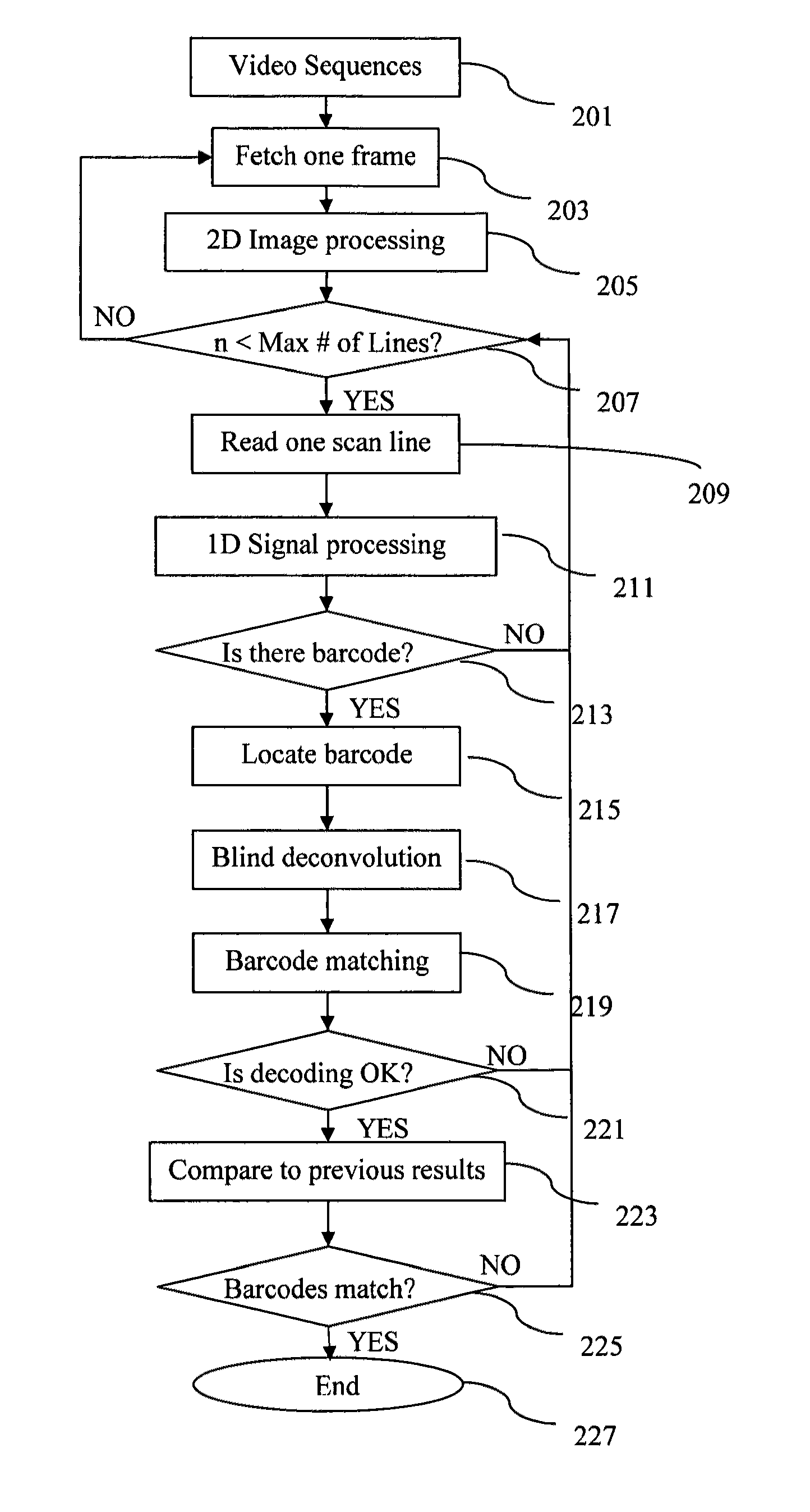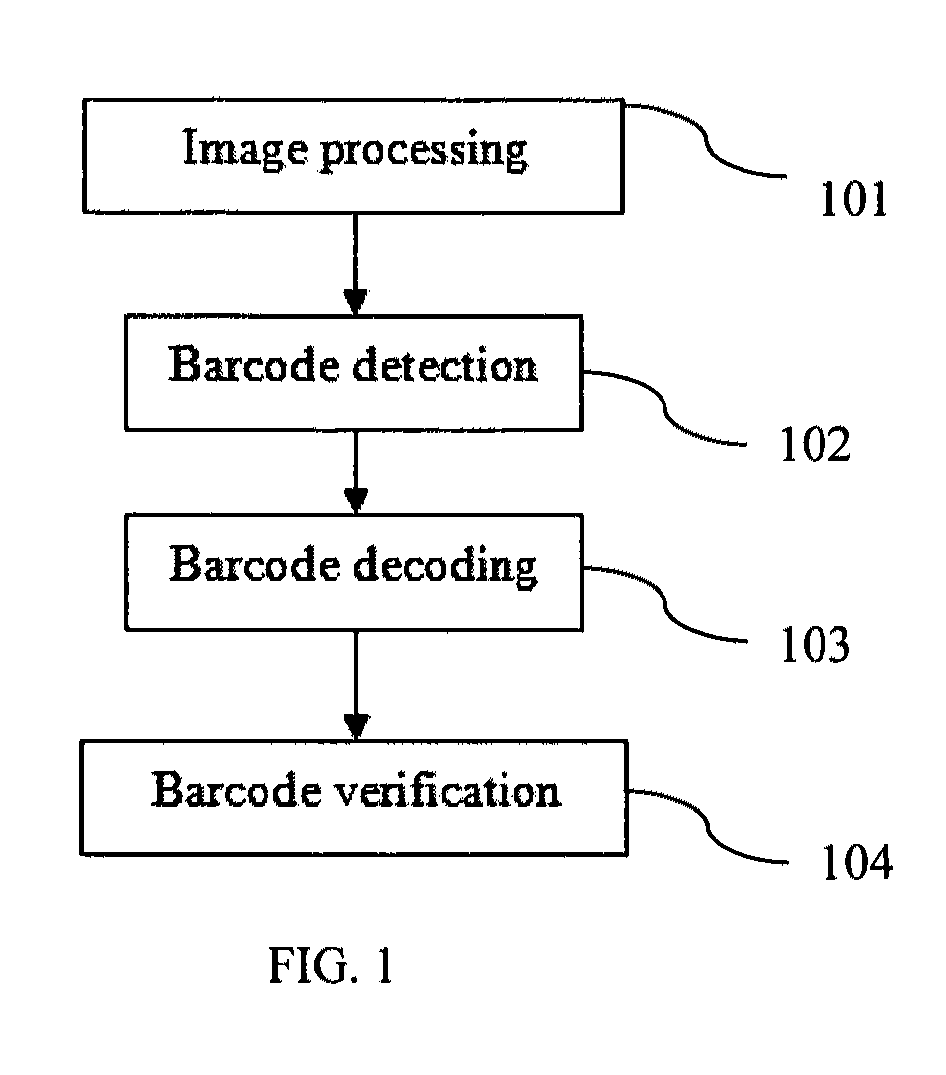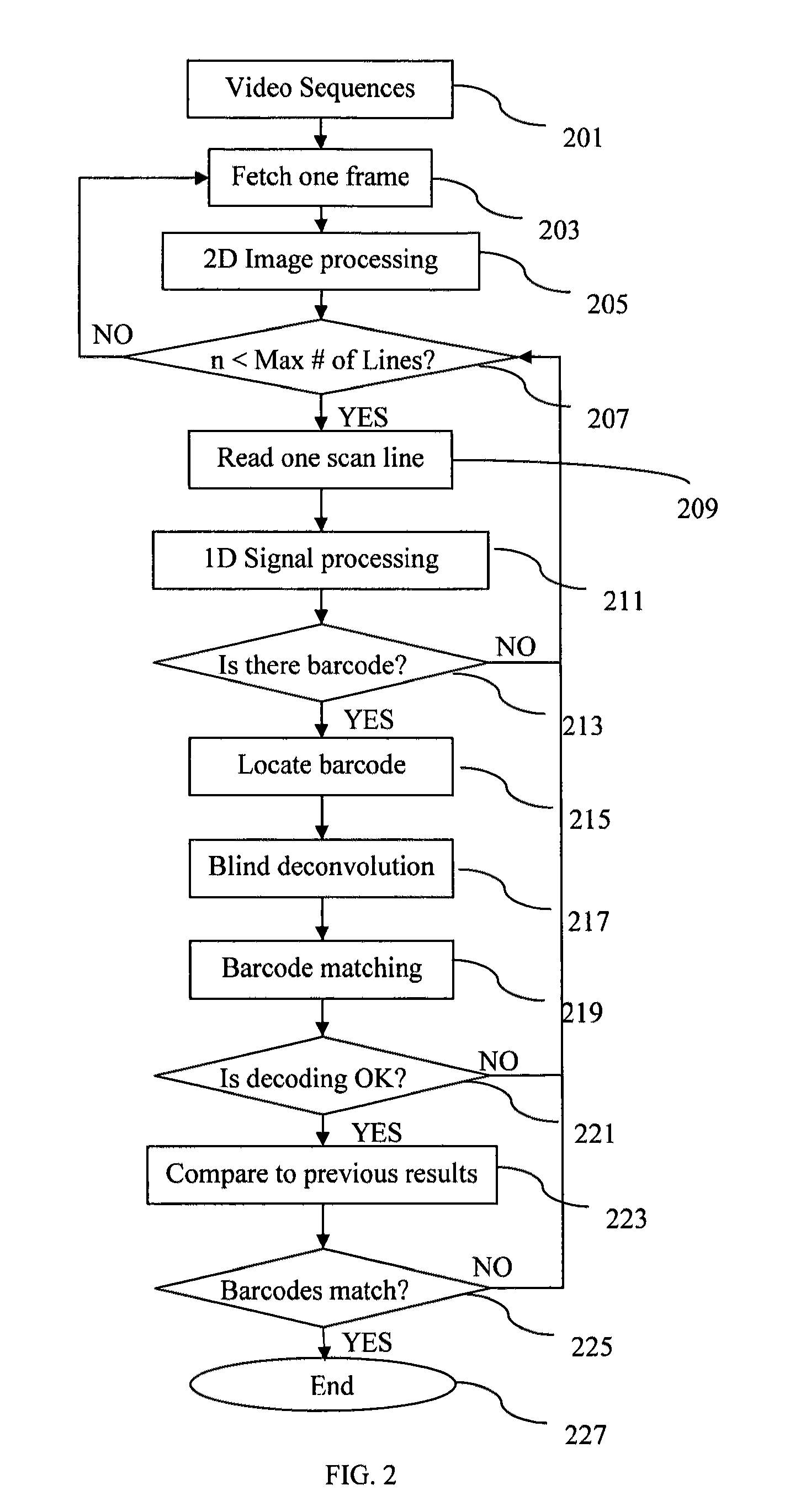Real-time barcode recognition using general cameras
a general camera and barcode technology, applied in the field of image recognition, can solve the problems of affecting the quality of barcode images, affecting so as to achieve efficient buffering of recognition history, restore blurry barcode images, and improve the accuracy of barcode images
- Summary
- Abstract
- Description
- Claims
- Application Information
AI Technical Summary
Benefits of technology
Problems solved by technology
Method used
Image
Examples
Embodiment Construction
[0018]FIG. 1 shows the major components of the barcode recognition system. The system first reads either a still image or image frames from video sequences. Image pre-processing methods are applied by the image processing component 101 to reduce noise and normalize pixel grayscale. On each normalized image, the barcode detection component 102 checks if the image contains barcode lines. If there is a barcode, the barcode detection component 102 tries to identify the beginning and ending positions of the barcode. The tailored barcode region is passed to the barcode decoding component 103, which selectively decodes multiple scan lines across the barcode and match against predefined barcode models. The best matched barcodes are saved in the history buffer. The barcode verification component 104 ensures that the method achieve the highest recognition sensitivity while maintaining the lowest false recognition rate.
[0019]FIG. 2 shows a flow diagram of the barcode recognition system in acco...
PUM
 Login to View More
Login to View More Abstract
Description
Claims
Application Information
 Login to View More
Login to View More - R&D
- Intellectual Property
- Life Sciences
- Materials
- Tech Scout
- Unparalleled Data Quality
- Higher Quality Content
- 60% Fewer Hallucinations
Browse by: Latest US Patents, China's latest patents, Technical Efficacy Thesaurus, Application Domain, Technology Topic, Popular Technical Reports.
© 2025 PatSnap. All rights reserved.Legal|Privacy policy|Modern Slavery Act Transparency Statement|Sitemap|About US| Contact US: help@patsnap.com



